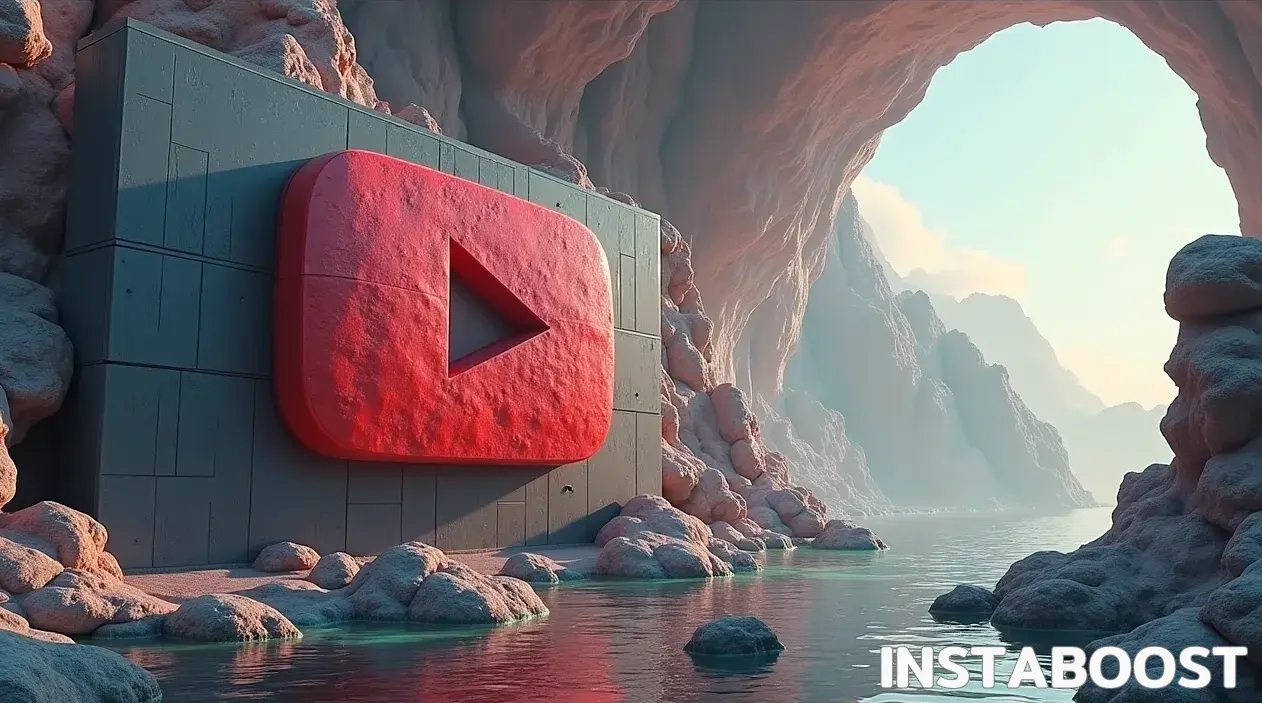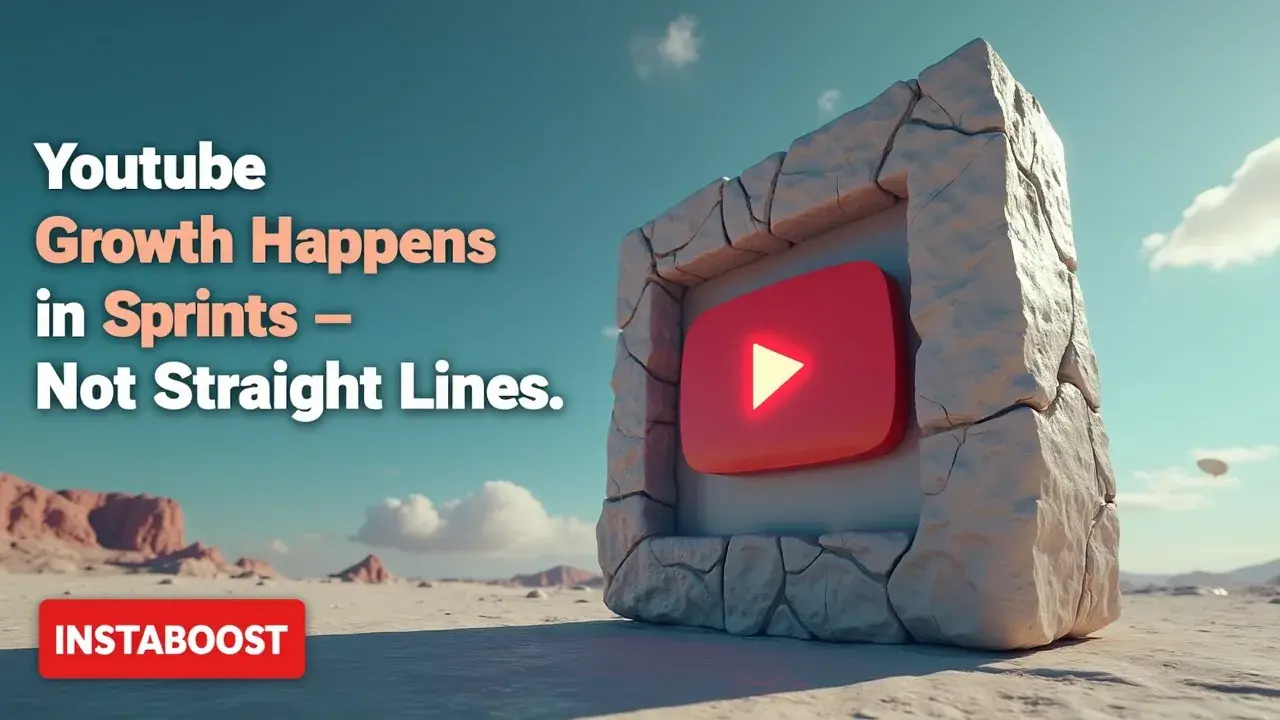Does YouTube Growth Happen in Sprints, Not Straight Lines?
YouTube growth typically arrives in bursts rather than steady increments. Sudden leaps often follow algorithmic discovery, strong audience fit, or a breakout video that lifts an entire catalog. Plateaus can result from content fatigue, mismatched topics, or inconsistent viewer retention, and they tend to persist until format, packaging, or targeting improves. Focusing on iterative testing and aligning topics with audience intent positions a channel to benefit when momentum returns.
Why Channel Growth Rarely Follows a Predictable Path
A lot of people go into YouTube assuming their channel will grow slowly, in a way that makes sense – upload regularly, gain a few subscribers at a time, and see a line on the graph that moves steadily up. But when you really pay attention to how growth happens for most channels, it’s rarely that simple.
The numbers often look uneven, almost messy. You might spend weeks watching your stats barely move, and then one video takes off for reasons you can’t quite pinpoint. It’s not just the algorithm acting strangely; it’s more about how people actually notice and share new videos. Sometimes, a video sits quietly with hardly any views, and then suddenly, maybe two weeks later, it gets picked up and reaches a much bigger audience.
The numbers often look uneven, almost messy. You might spend weeks watching your stats barely move, and then one video takes off for reasons you can’t quite pinpoint. It’s not just the algorithm acting strangely; it’s more about how people actually notice and share new videos. Sometimes, a video sits quietly with hardly any views, and then suddenly, maybe two weeks later, it gets picked up and reaches a much bigger audience.
That’s the burst everyone talks about, when suddenly everything seems to click – the video is what people want, it shows up in the right places, and for a short time, the channel grows fast. After that, the activity dies down again, and you’re left with a lot of questions about what triggered it or what to expect next.
Even channels with huge followings have these ups and downs, and it’s not a sign that something’s wrong with your approach. If anything, it’s become more common, especially with things like YouTube Shorts making it easier for any channel to have a quick spike in attention.
There are tools for YouTube creators that can help you make sense of these patterns, but even then, part of the process is getting comfortable with uncertainty. Once you get used to these patterns – the slow stretches, the bursts that come out of nowhere – it gets a little easier to keep going through the quiet periods. You stop waiting for the numbers to behave, and start thinking more about being ready for whenever things start moving again.
Even channels with huge followings have these ups and downs, and it’s not a sign that something’s wrong with your approach. If anything, it’s become more common, especially with things like YouTube Shorts making it easier for any channel to have a quick spike in attention.
There are tools for YouTube creators that can help you make sense of these patterns, but even then, part of the process is getting comfortable with uncertainty. Once you get used to these patterns – the slow stretches, the bursts that come out of nowhere – it gets a little easier to keep going through the quiet periods. You stop waiting for the numbers to behave, and start thinking more about being ready for whenever things start moving again.

Lessons From the Plateau: Why Growth Isn’t Linear
It honestly took me a while to see how this really works. For a long time, I’d look at bigger channels and assume their growth was this steady, obvious climb – like, if you kept uploading, your subscribers would just keep going up at the same pace. But when I actually dug into the numbers, both on my own channel and some others I follow, the pattern was nothing like that.
Most of the time, things stay pretty flat, sometimes for weeks, and then out of nowhere there’s a jump. I’ve had videos I spent days editing barely move the needle, while something I filmed in a rush, like a YouTube Short, suddenly pulled in a bunch of new viewers overnight. It turns out these long quiet periods and sudden bursts are pretty normal. The recommendation system isn’t something you can predict or even really understand from the outside – it’s more about timing, or a topic suddenly catching on, or sometimes just being in the right place at the right moment. Even channels with huge followings end up stuck for months, and then they get a hit again.
I remember stumbling across a whole thread where people were talking about ways to secure more YouTube subs, but honestly, none of those tips seemed to guarantee anything either. So, if you want to keep going, you kind of have to get comfortable with not knowing when things will shift, and just keep making videos even when it feels like no one’s there. There isn’t a secret formula or a perfect strategy that guarantees growth. Mostly, it’s about continuing to show up, even on the days when it feels pointless, because those unexpected spikes usually happen to the people who kept uploading after everyone else got discouraged.
Sharpen Your Signal, Not Your Shout
You don’t need to push harder or get noisier; you need to make things easier to understand. When a YouTube channel finally grows past a plateau, it’s rarely because someone started uploading more often or tried to hype up every video. More often, it happens when they find something that really connects – a new angle, a format that feels different, or sometimes simply a title and thumbnail that actually make sense to people scrolling by. Growth on YouTube seems to reward creators who keep things straightforward and direct, rather than those who pile on production or ramp up their schedules. That’s why you’ll see a quick, simple Short do better than a crafted, high-effort video: it gets to the point, helps viewers with something specific, or lands a joke in a way that’s easy to get right away.
The algorithm isn’t interested in how much work went into something; it reacts to what people find useful or interesting and how quickly it gets their attention – sometimes all it takes is a string of consistent likes for videos to signal that clarity to the system. I think a lot of creators end up stuck because they believe the next big step forward is about grinding harder or adding layers of complexity, but really, the best results come from making it obvious who your video is for and why it matters. When you look at what’s actually happening during those surprising spikes in your analytics, it’s almost always a sign that something connected – usually something clear, rather than something more elaborate.
Growth comes in these unpredictable jumps because people respond to what’s easy to notice and understand, not to what’s the most energetic or complicated. So instead of raising the volume, it’s probably better to make your video the one that answers a question someone has late at night, when they’re searching for something that actually makes sense for them.
Why Short Bursts Outperform Constant Grind
Most advice skips this, but I think it matters: when a YouTube channel suddenly takes off, it usually isn’t because of luck or some secret algorithm boost. More often, it’s because the creator tried something different, even if it felt risky. Consistency gets talked about a lot – people say you have to keep uploading, stick to your schedule, keep refining.
But if you look at what’s actually happened for a lot of channels, the real turning points come when someone breaks their own pattern. Like, a channel might stick to the same type of videos for months, then try something new – a different format, a new topic, maybe a longer break between uploads – and that’s what finally gets noticed. It happens again and again: someone goes quiet for a bit, comes back with a new approach, and suddenly people pay attention. It’s not some fluke. It’s more that YouTube, and the people watching, tend to respond to whatever feels different or unexpected, not just more of the same. That doesn’t mean you should disappear without thinking it through, or throw out everything you’ve built.
But it’s worth questioning the idea that all you need is to stay on autopilot, especially if you’re feeling stuck. It helps to pay attention to those odd moments when something shifts – what changed? How did viewers react? Sometimes, you notice a sudden jump in your analytics, or even improve performance metrics in a way that’s hard to pin down. YouTube growth often comes in bunches, probably because both the site and the audience are always shifting in ways you can’t quite predict. If you’re locked into your usual habits, it’s easy to overlook signs that it’s time to experiment. So if your analytics ever show a sudden spike, don’t ignore it. It’s usually a hint that something about what you tried landed differently, and that’s where things can start to move.















